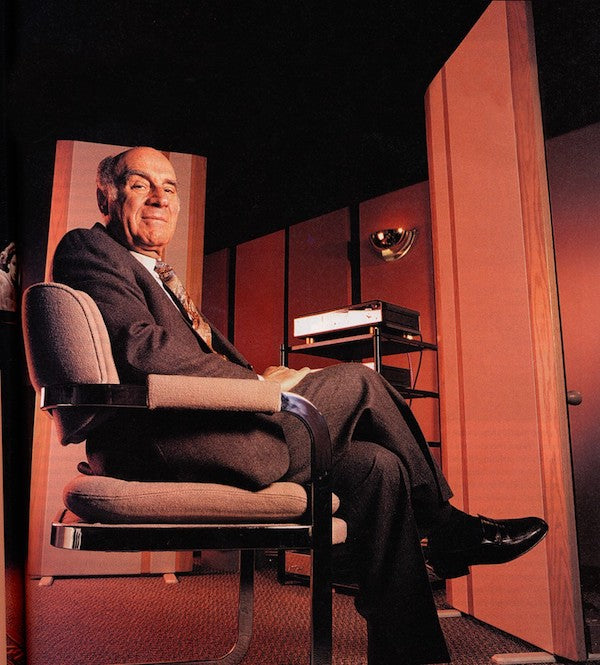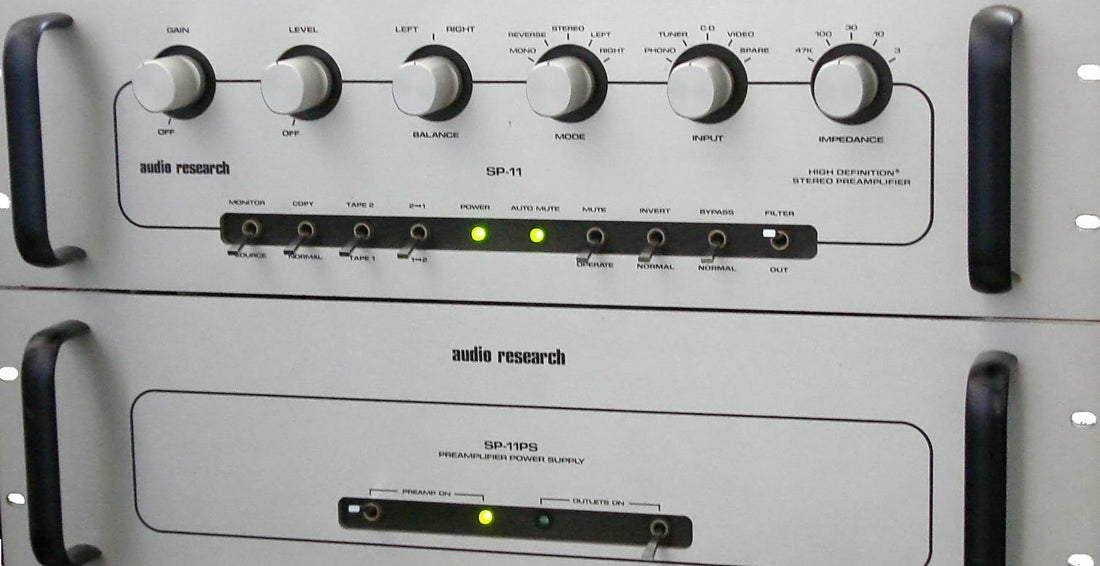When I was a few years out of college I had put together a pretty respectable stereo system, in large part thanks to the advice of my friend and The Absolute Sound writer, the late Bob Reina. We had known each other since high school. He always had more money than me and was able to buy good gear at times when I could only dream of it.
But by the time I was in my mid-twenties I had Dahlquist DQ-10 speakers with dual subwoofers and a Van Alstine-modified crossover, a Harman Kardon T60 turntable (later a Linn LP12 with a Syrinx PU-3 arm and a variety of cartridges), a NAD 3020A integrated amp with the preamp section feeding a Dynaco Stereo 416 power amp, and a bunch of Monster Interlink Reference interconnects and homemade speaker cable. Almost all of it bought used. It sounded good. I was happy. I was living in a condo complex and my adjoining neighbor was deaf (literally) so I could blast the stereo any time.
I was not happy being an electronics/industrial buyer; I detested the politics, favoritism and nepotism at one company and shortly moved to another, where the head of procurement treated us miserably. (A few years later he got arrested for taking kickbacks from vendors.) So, at the age of 27 I wanted a career change.
Sometimes you do get a break. I’d been writing pop music reviews for The Absolute Sound for about a year and a half when editor-in-chief Harry Pearson aka HP invited me to go to dinner with him one night in 1987 – and offered me a full-time job. I took it; the story is in Issue 102.
But before then I had already been a pop music reviewer at the magazine for about a year and a half. Soon after I got that gig Bob and Harry started putting the squeeze on me. Bob: “Now that you’re working for TAS you’re going to have to upgrade your equipment.” Harry: “Every reviewer needs a reference system.” Me: “I don’t have any money!”
Over the course of many phone calls, my resolve weakening, the three of us started going over what kind of equipment I should upgrade to. One day Harry said, “You sound like an Audio Research man to me.”
Meaning, I should get an Audio Research SP-11 MkII preamplifier, Harry’s reference at the time. $4,995. About $11,275 in today’s money. In other words, ridiculous, unobtanium, out of the question, Mr. Faversham. Me: “How am I going to do this? It’s impossible!” Harry: “You won’t be satisfied with anything less than an SP-11 [MkII]. And you can get it for about $2,700 at industry accommodation.”
The SP-11 MkII was the undisputed number one preamplifier in the world at the time. Rarely has a single piece of equipment been so dominant in its heyday. A two-chassis design using six 6DJ8 tubes, it had every feature an audiophile could possibly want and was stunning in its industrial design. It’s become a true audiophile classic. You’ll soon be able to read much more about it in Ken Kessler’s upcoming book, Audio Research: Making the Music Glow, due in August.

I told Bob what Harry said. Bob replied, “wait a minute. You have a mortgage on your condo, right? Interest rates are good right now. You can refinance your mortgage, pay the same monthly payment, and get $13,000 cash from the deal!”
It had never occurred to me, but Bob was in finance.
First response: “That’s crazy.” Second response: “I can?”
You know where this is going. I did the deal.
I called Terry Dorn, who handled industry accommodation purchases for Audio Research Corporation. “I want to buy an SP-11 MkII.” I was not expecting his reply. He told me they could not sell one to me. Whaaat? I work for TAS! “We have a strict company policy and can only sell to qualified equipment reviewers. You’re a music reviewer so sorry, we can’t sell one to you. I hope you understand.”
Actually, I did understand and respected ARC’s position, even if my dreams of sonic glory felt crushed. I told Harry, and his reaction was somewhat less equanimous. “He said WHAT? Get Terry on the line!” “No, no, Harry, it won’t do any good. Terry is right.” Harry thought for a minute, stared at me with that laser-beam-through-steel-plate look of his and said, “I’m going to call Mike Kay and tell him to sell you an SP-11.” Michael Kakadelis, known to everyone as Mike Kay, was the owner of Lyric Hi-Fi, the legendary Manhattan high-end store and a king among dealers. Harry made the call. He hung up and said, “Mike will sell you one. But we are to tell no one about this.” Yep, comprende.

MIke Kay. From the Lyric Hi-Fi website, www.lyricusa.com.
I made an appointment with Lyric, drove into the city, handed the sales guy a check and loaded the two boxes into my 1985 Firebird. A little shakily, considering the magnitude of what I had just done. It didn’t really hit me until I got through the Midtown Tunnel into Queens. I can’t have an SP-11, huh? I can’t have one, you say? Can’t have one? Can’t have it? Well, I got one. I got one. I GOT ONE, HAAH HAAAHHHH!
I should end the story here for dramatic effect, but I have a feeling you want to know what happened next. I got home and very carefully unboxed the SP-11 MkII and put it into my system. In the middle of this, Harry had called. “Well? Did you listen to it yet?” He sounded like a giddy teenager eager for gossip. “Call me when you do!” He was almost as excited as I was.

Some assembly required. Photo courtesy of TONE Audio.
I wanted to listen immediately, and so did my friends who were there for the Big Event, but resisted the urge until it had warmed up for about an hour. Yeah, I was pretty hard core in those days. Finally, the momentous first-needle-drop moment had come.
Ever have that feeling when the adrenaline is pumping through your body and you can feel the burn of the excitement? Of course you have. It’s a miracle I was able to cue the record. (I don’t remember which one.)
Well, after all that build-up –
Good lord.
Oh my g-d.
I need to sit down. Give me the strength to breathe.
You might recall my previous preamp was a NAD 3020A. I had just gone from a mid-fi component to the greatest preamp in the world.
The difference was not subtle. The soundstage was expansive, beyond the boundaries of my room walls. The resolution was beyond anything I could have begun to imagine (though I’d heard the SP-11 MkII at Harry’s, hearing a component in your own system is as we know an entirely different experience). The tonal balance was perfect, the highs extended, the midrange rich and palpable, and the bass more detailed and authoritative than I could have dreamed of.
With that one needle drop, my system went from pretty darn good to conveying that magic – there’s no other way to put it – that elevates an audio system from being a mere reproducer of sound to something that conveys something of the feeling of being there with the performers and connecting you to the music in a profoundly emotional way.
I was ecstatic.
Postscript:
Of course Terry Dorn eventually found out that I got an SP-11 MkII. I forget how, and it was ultimately a non-issue. Terry is one of the finest people in the audio industry. We became warm friends and he eventually became ARC’s president. He retired from the company in 2015.
I eventually sold the SP-11 MkII for an Audible Illusions Modulus 3 because I loved the AI’s sweet midrange (still do) and I needed money at the time and pocketed a nice chunk of cash on the deal. Do I ever have seller’s remorse? Yeah. Even after all this time.



